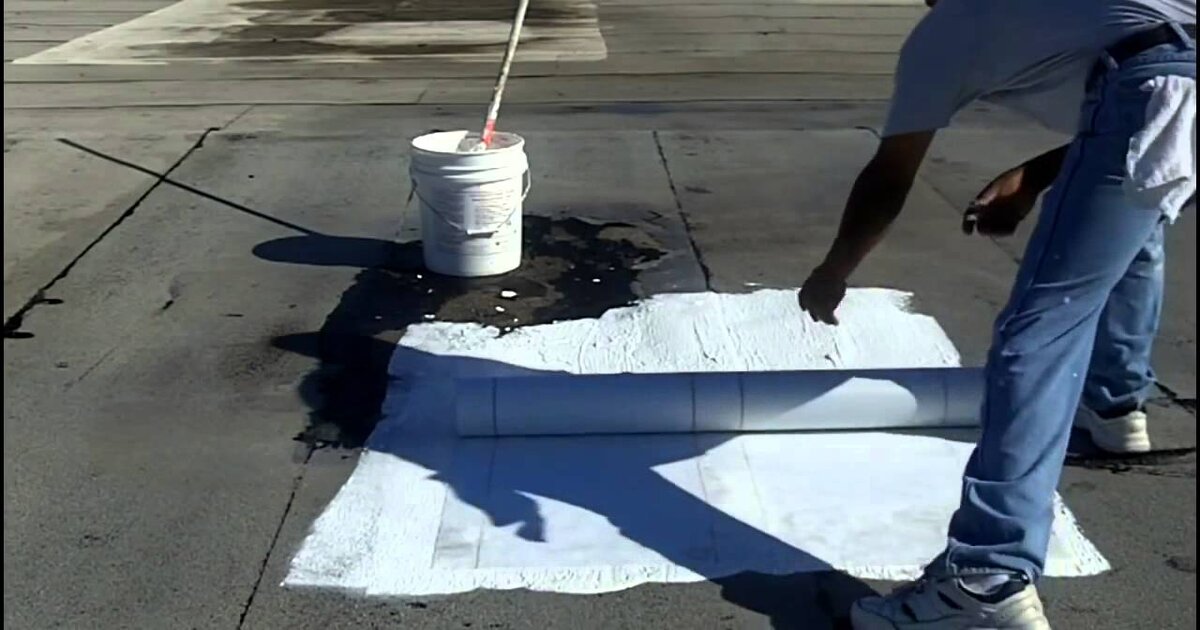
How to prevent water leakage from the ceiling and walls
There are many methods that are used to address water leakage problems and to prevent leakage from occurring in the first place. It is best to detect the location of the water leak and treat it as quickly as possible to prevent serious consequences that could occur, such as cracks in the walls of the house when water accumulates and pools above or inside the walls.
What is more dangerous is that damp ceilings and walls are the most suitable environment for wall mold to appear.
In this guide presented by Jaafar Shop, we will explain how you can prevent water leakage from the ceiling and walls.
• Prevent water leakage from the roof
There are many factors that help in the process of preventing water leakage from the roof, the most important of which is the use of insulators.
These are the most important types of insulation materials used to prevent water leakage from the roof.
1. Silica insulation:
Silica is a chemical substance that comes in the form of granules. Silica insulation usually occurs during house construction by mixing silica with concrete, as it increases the bond strength between the concrete parts and thus completely prevents water leakage.
2. Insulation using aluminum sheets:
One of the most famous insulation materials, the sheets are made of Unomin. These sheets are spread over the ceilings and installed to completely prevent water leakage.
3. Polystyrene insulation:
Polystyrene plus cork makes up the polystyrene insulation material. They are panels that are stacked on the surface and then concrete is poured over them to prevent water leakage.
4. Insulation using water glass:
Water glass is dissolved using water and sprayed on the surface.
5. Insulation using asphalt:
Asphalt is spread over the roof, and it is one of the most popular and effective methods of insulation.
6. Rock wool insulation:
Rock wool is rubbed over the surfaces and then cement is poured over it. Rock wool completely insulates surfaces and protects them from water leakage completely.
• Prevent water leakage from walls
In winter, many homes suffer from problems with water leaking from the walls. This leakage leads to moisture and mold, and may cause severe damage to the home’s infrastructure.
The first step in addressing the problem of water leakage from walls is to find the main source of water leakage. In the past, breaking walls was the solution to discover the location of the leak, but now there are modern devices that can be used to detect the location of the leak without any breakage or damage to the walls or pipes.
While building a house, it is best to consider insulating the walls from the inside to ensure no leaks and to combat moisture and mold.
There are many ways to insulate walls
1. Wall covering:
Walls can be covered with colored ceramic to prevent moisture problems, especially in the kitchen and bathroom, as they are the places most exposed to water absorption.
2. Polystyrene:
Two types of boards are used: polystyrene boards and gypsum boards. The panels are attached to the walls using cement adhesives to completely prevent water leakage.
3. Insulation using stone wool:
Stone wool is used as we explained before.
4. Using asphalt on walls from the outside:
This method is suitable for homes that have no other homes around them.
• Treating water leaks in the bathroom
Bathroom problems are endless. The bathroom is the place where problems occur most.
The most common problem is a clogged sink. The problem of water leakage in the bathroom can be easily solved using a sump pump. If the problem is more complex or specific to the pipes or water network, it is best to bring a plumber into the house to inspect and address the problem.
By following this guide, you will be able to solve water leakage problems in your home easily. You can browse all insulation materials on Jaafar Shop from here .

التعليقات
اترك تعليق او سؤال